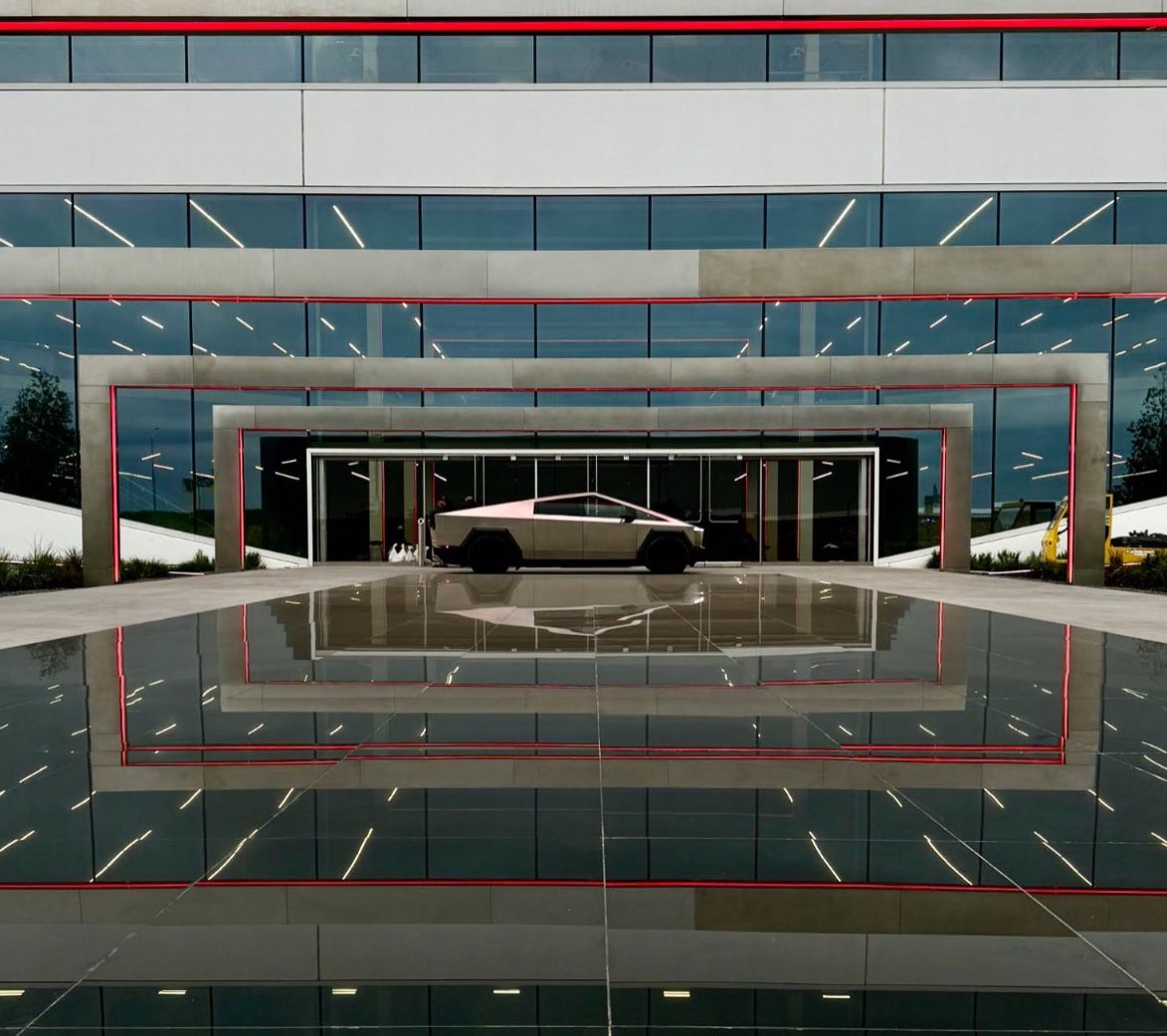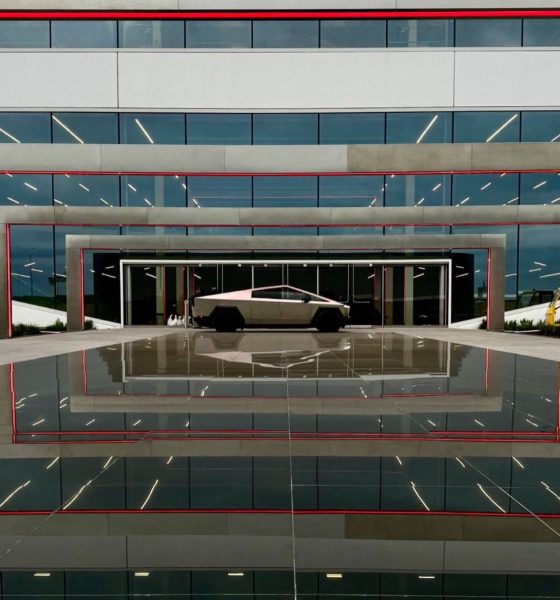Another busy year is coming to an end, closing yet another chapter in Tesla’s journey to advance sustainability. As we prepare for what’s expected to be an eventful 2024, it’s also worth looking back on Tesla’s year in 2023 to highlight some of the company’s many major developments.
Some of Tesla’s important accomplishments in 2023 included the launch of the highly anticipated Cybertruck and the redesigned Model 3 “Highland,” as well as the widespread adoption of the automaker’s charging hardware across the North American auto industry.
Other important developments not highlighted in the list below included Tesla’s industry-rocking price cuts early in the year, and the company’s increasing production of giant Megapack batteries.
The year was a little quiet in Solar and Powerwall deployment and Semi production, though what Tesla lacked in these areas, the company arguably made up for with several other crucial developments.
Below you can see a list of some of Tesla’s most notable stories in 2023.
Tesla announced Gigafactory Mexico
At its Investor Day event earlier this year, Tesla officially announced plans to build a new Gigafactory in Mexico to help build its next-generation EV platform. Set to be constructed in the state of Nuevo León, Tesla recently gained federal land use permits, allowing it to begin construction on the site.
Tesla detailed its Master Plan part three
In April, Tesla shared its Master Plan part three, detailing the company’s proposal for a path to reaching a sustainable global energy economy. The plan followed the Tesla Master Plan parts one and two, which were shared by the company in 2006 and 2016, respectively.
Ford adopted North American Charging Standard (NACS), others followed
In a Spaces call on X in May, Ford CEO Jim Farley spoke with Elon Musk and officially announced the legacy automaker’s plans to adopt Tesla’s charging hardware, dubbed the North American Charging Standard (NACS). The news meant that Ford EVs would someday gain access to the Supercharger network, marking the first step in Tesla’s plans to open the charging network to all EVs.
Since then, every startup and major automaker has followed suit, with the exception of Chrysler-Dodge parent company, Stellantis.
Tesla began producing Dojo supercomputer
Tesla began production of the Dojo supercomputer in July, after the project was originally unveiled during AI day in 2021. The supercomputing cluster is expected to be able to process large streams of data to perform advanced AI and machine learning computations, and it’s projected to become one of the top supercomputers worldwide in the coming months, offering applications from the Full Self-Driving (FSD) beta and beyond.
Elon Musk live streamed FSD beta v12, later rolling early versions out to employees
Speaking of the FSD beta, Musk in August shared a live stream of the then-upcoming FSD version 12, which the CEO has touted as an important key to unlocking full autonomous driving. More recently, Musk confirmed that the FSD beta v12 was starting to roll out to employees, and it has been confirmed to be hitting over 15,000 employee-owned vehicles ahead of a wider release to the public.
Tesla’s FSD beta program also reached 500 million cumulative miles driven in October, representing a massive amount of real-time data for the automaker’s AI to learn from.
Tesla launched the redesigned Model 3 “Highland”
After several months of speculation that Tesla would be releasing a redesigned version of its popular Model 3 sedan, the automaker held a premiere event in Norway in late August, officially launching the refreshed “Highland” design. Initial customer deliveries of the redesigned Model 3 have since been rolling out across much of Europe, Asia, and other markets like Australia and New Zealand.
While the Model 3 Highland isn’t yet available in North American markets, it’s widely expected to be launched in early 2024.
Continued developments to Tesla’s Optimus program
While there weren’t any breakout news stories or an official release for Tesla’s Optimus humanoid robot, the company did highlight its continued developments for the product. Tesla has been ramping up hiring for the Optimus team, featuring videos showing off how the robot can now sort objects autonomously, perform yoga poses, dance and more.
More recently, Musk predicted that Optimus will be able to thread a needle in just a year, and manufacturing expert Sandy Munro says he expects that the humanoid robot will begin being used in Tesla’s factories as soon as 2024.
Tesla launched BP Supercharger partnership
In the first deal of its kind, Tesla sold $100 million worth of Supercharging equipment to BP (formerly British Petroleum) in October, paving the way for future commercial deals that could result in a major revenue stream in the future — especially as Tesla’s NACS takes shape as the charging standard in the next few years.
Tesla launched Cybertruck with delivery event
Last but certainly not least, Tesla held the Cybertruck delivery event late last month, after initially unveiling the vehicle over four years ago in November 2019. Initial deliveries of Tesla’s “Foundation Series” launch edition Cybertrucks have been going out to employees throughout this month, and many reservation holders have been invited to place their own orders for the vehicle.
RELATED:
Elon Musk to discuss Tesla, SpaceX future plans in company talks
What are your thoughts? Did I miss anything important that Tesla did in 2023? Let me know at zach@teslarati.com, find me on X at @zacharyvisconti, or send your tips to us at tips@teslarati.com.

News
Tesla FSD fleet is nearing 7 billion total miles, including 2.5 billion city miles
As can be seen on Tesla’s official FSD webpage, vehicles equipped with the system have now navigated over 6.99 billion miles.

Tesla’s Full Self-Driving (Supervised) fleet is closing in on almost 7 billion total miles driven, as per data posted by the company on its official FSD webpage.
These figures hint at the massive scale of data fueling Tesla’s rapid FSD improvements, which have been quite notable as of late.
FSD mileage milestones
As can be seen on Tesla’s official FSD webpage, vehicles equipped with the system have now navigated over 6.99 billion miles. Tesla owner and avid FSD tester Whole Mars Catalog also shared a screenshot indicating that from the nearly 7 billion miles traveled by the FSD fleet, more than 2.5 billion miles were driven inside cities.
City miles are particularly valuable for complex urban scenarios like unprotected turns, pedestrian interactions, and traffic lights. This is also the difference-maker for FSD, as only complex solutions, such as Waymo’s self-driving taxis, operate similarly on inner-city streets. And even then, incidents such as the San Francisco blackouts have proven challenging for sensor-rich vehicles like Waymos.
Tesla’s data edge
Tesla has a number of advantages in the autonomous vehicle sector, one of which is the size of its fleet and the number of vehicles training FSD on real-world roads. Tesla’s nearly 7 billion FSD miles then allow the company to roll out updates that make its vehicles behave like they are being driven by experienced drivers, even if they are operating on their own.
So notable are Tesla’s improvements to FSD that NVIDIA Director of Robotics Jim Fan, after experiencing FSD v14, noted that the system is the first AI that passes what he described as a “Physical Turing Test.”
“Despite knowing exactly how robot learning works, I still find it magical watching the steering wheel turn by itself. First it feels surreal, next it becomes routine. Then, like the smartphone, taking it away actively hurts. This is how humanity gets rewired and glued to god-like technologies,” Fan wrote in a post on X.
News
Tesla starts showing how FSD will change lives in Europe
Local officials tested the system on narrow country roads and were impressed by FSD’s smooth, human-like driving, with some calling the service a game-changer for everyday life in areas that are far from urban centers.

Tesla has launched Europe’s first public shuttle service using Full Self-Driving (Supervised) in the rural Eifelkreis Bitburg-Prüm region of Germany, demonstrating how the technology can restore independence and mobility for people who struggle with limited transport options.
Local officials tested the system on narrow country roads and were impressed by FSD’s smooth, human-like driving, with some calling the service a game-changer for everyday life in areas that are far from urban centers.
Officials see real impact on rural residents
Arzfeld Mayor Johannes Kuhl and District Administrator Andreas Kruppert personally tested the Tesla shuttle service. This allowed them to see just how well FSD navigated winding lanes and rural roads confidently. Kruppert said, “Autonomous driving sounds like science fiction to many, but we simply see here that it works totally well in rural regions too.” Kuhl, for his part, also noted that FSD “feels like a very experienced driver.”
The pilot complements the area’s “Citizen Bus” program, which provides on-demand rides for elderly residents who can no longer drive themselves. Tesla Europe shared a video of a demonstration of the service, highlighting how FSD gives people their freedom back, even in places where public transport is not as prevalent.
What the Ministry for Economic Affairs and Transport says
Rhineland-Palatinate’s Minister Daniela Schmitt supported the project, praising the collaboration that made this “first of its kind in Europe” possible. As per the ministry, the rural rollout for the service shows FSD’s potential beyond major cities, and it delivers tangible benefits like grocery runs, doctor visits, and social connections for isolated residents.
“Reliable and flexible mobility is especially vital in rural areas. With the launch of a shuttle service using self-driving vehicles (FSD supervised) by Tesla in the Eifelkreis Bitburg-Prüm, an innovative pilot project is now getting underway that complements local community bus services. It is the first project of its kind in Europe.
“The result is a real gain for rural mobility: greater accessibility, more flexibility and tangible benefits for everyday life. A strong signal for innovation, cooperation and future-oriented mobility beyond urban centers,” the ministry wrote in a LinkedIn post.
News
Tesla China quietly posts Robotaxi-related job listing
Tesla China is currently seeking a Low Voltage Electrical Engineer to work on circuit board design for the company’s autonomous vehicles.

Tesla has posted a new job listing in Shanghai explicitly tied to its Robotaxi program, fueling speculation that the company is preparing to launch its dedicated autonomous ride-hailing service in China.
As noted in the listing, Tesla China is currently seeking a Low Voltage Electrical Engineer to work on circuit board design for the company’s autonomous vehicles.
Robotaxi-specific role
The listing, which was shared on social media platform X by industry watcher @tslaming, suggested that Tesla China is looking to fill the role urgently. The job listing itself specifically mentions that the person hired for the role will be working on the Low Voltage Hardware team, which would design the circuit boards that would serve as the nervous system of the Robotaxi.
Key tasks for the role, as indicated in the job listing, include collaboration with PCB layout, firmware, mechanical, program management, and validation teams, among other responsibilities. The role is based in Shanghai.
China Robotaxi launch
China represents a massive potential market for robotaxis, with its dense urban centers and supportive policies in select cities. Tesla has limited permission to roll out FSD in the country, though despite this, its vehicles have been hailed as among the best in the market when it comes to autonomous features. So far, at least, it appears that China supports Tesla’s FSD and Robotaxi rollout.
This was hinted at in November, when Tesla brought the Cybercab to the 8th China International Import Expo (CIIE) in Shanghai, marking the first time that the autonomous two-seater was brought to the Asia-Pacific region. The vehicle, despite not having a release date in China, received a significant amount of interest among the event’s attendees.










